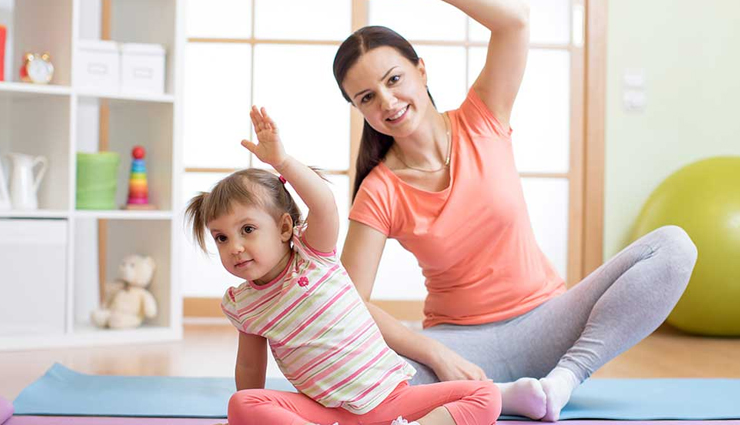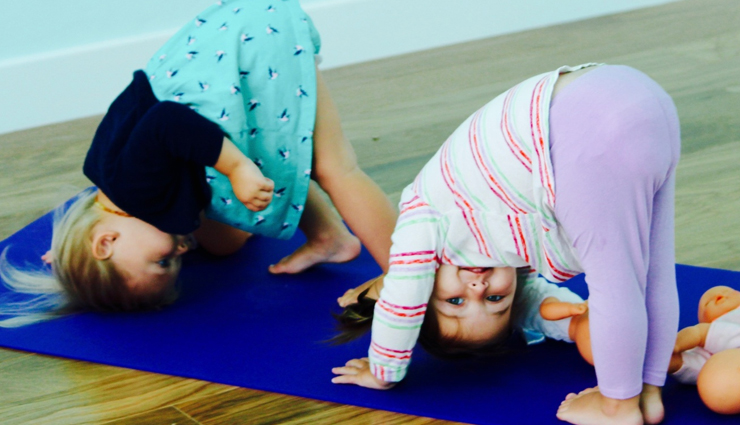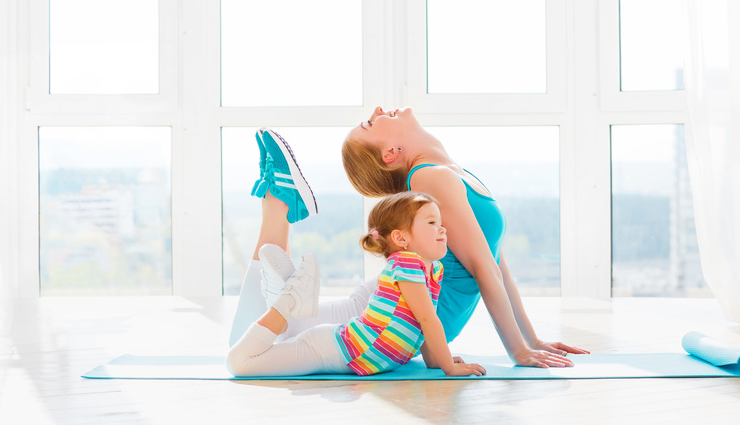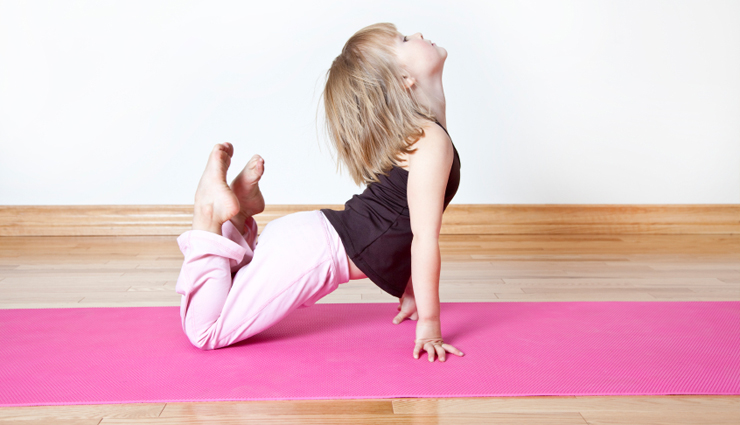- Home›
- Healthy Living›
- 7 Health Benefits Of Yoga For Toddlers
7 Health Benefits Of Yoga For Toddlers
By: Kratika Maheshwari Fri, 02 Sept 2022 08:50:37

Stress and fatigue are not only felt by adults. Children can also get negative feelings. With yoga practice, children and toddlers become more relaxed and active.
Yoga is a series of theories and practices developed from India. As explained previously on the benefits of sarvangasana, the practice of yoga focuses on the union of mind, body and soul, and evokes the connection between man and his environment. Yoga essentially aims to help a person to feel happiness, freedom and enlightenment.
Posture exercises and meditation can not only be done by adults, generally from all ages can follow yoga to direct energy and find balance in life. With no exception, even the toddlers can be included in yoga classes. Children nowadays, always preoccupied with a fairly dense activity. Starting from school activities, extracurricular, tutoring, or a bunch of homework from school.

# Make Children Aware of Respiratory Control
Not only energizing your children, yoga practice can also give them relaxation that they need. You can make it more interesting by trying different techniques in order to make them comfortable, and can train deep breathing with more focus on mind.
The focus increases, as does their breathing ability and lungs. Also by doing this regularly, stress will eventually be reduced because more healthy hormones are released.
# Help Create Awareness and Focus
Similar to the health benefits of exercise, Yoga helps create awareness in the body through breathing and deep movements. It gives children a way of expressing themselves, building a strong relationship between what they hear and what they do.
Toddlers who have a healthy body awareness are more confident and strong, have better posture, breathe better and have a sense of calm.

# For Meditation and Relaxation
Yoga is meditative by nature. So, whether a child holds a balance posture, sits in meditation or moves through a series of poses, there will be calming and soothing qualities.
Giving younger children to do while they rest on their mats will help their attention, such as suggesting they think of a favorite color or toy. Meanwhile, older kids will find it much easier to rest longer, even with less structures.
Meditation for toddlers can make them relax, calm, and understand about the relationship of their mind with their body. A study said, children who practiced meditation for four months experienced improvements in academic performance, exhibiting positive social behaviors, were more optimistic, and less stressed, also more aggressive than children who did not meditate.
Therefore, it is important to teach meditation to children. By doing meditation for the child, future generations get better, succeed, and allow positive transformation in themselves.

# Develop Focus and Concentration
Indeed, training a child’s focus requires patience. Whether you are studying, doing activities that are instructed by parents or their own activities. Parents or teachers must often experience conditions where children have difficulty concentrating on one thing or another.
For example, when parents ask the child to complete tasks or homework from the teacher at school. But it turns out that when checked, not yet five minutes had passed, the child was already playing doll.
Another case with teachers in school, when teaching lessons counting or spelling sentences to students. They’d tend to initially pay attention, but not for long because they often lost focus with other interesting things or activities.
Some cases of difficulty concentrating or loss of focus in children often occur at the age of 4-6 years in activities or learning processes.
Of course, handling or training the focus of children of each age is different according to the conditions experienced. There are three ways that can be done to train children’s focus, especially in toddlers. They are the Homework Rewards, Visual Tracking Exercise, and Mind Body Integration by doing Yoga.
The act of practicing poses encourages the child to clear their mind and focus on effort. As a result of this single focus on achieving a particular pose or staying balanced, yoga helps children to focus and concentrate at school and get better grades, some research notes. It can also make them healthier as well, as similar with health benefits of doing simple exercises.

# Way to Increase Self-esteem and Confidence
Yoga helps instill confidence and to teach the child at the level of experience. With confidence in their minds, toddlers can achieve anything they want with no surrender.
It is our responsibility to develop our children’s admiration and give them a strong sense of self so that they know where they are in this world and can create something that’s better out of this world.
This exercise also teaches them to persevere, be patient, and work towards their goals. A yoga teacher can only offer guidance, showing the ways to succeed.
Therefore, when a child mastered a pose, it gave him confidence and self-esteem. Yoga is also useful as a provider of tools to practice compassion, attention, generosity, focus, strength.
# Strengthening and Energizing
Besides being great for stretching, yoga also builds strength, as well as body awareness and coordination. A strong body digests food better, maintains a healthy weight and can sustain stress of carrying heavy loads, such as backpacks. The body will also breathe better, work more efficiently and protect more fragile joints.

# Strengthen the Balance of the Body
As mentioned in the benefits of naukasana, poses to train balance, such as tree poses for example, can increase focus power. Balance exercises are beneficial for developing intrinsic strength, evoking meditative feelings, and improving peace of mind. This can help children cope with the stress of facing the constant challenges and stimulation they face on a daily basis.





